Samsung Galaxy S9 Plus vs. Apple iPhone X : Head-to-Head Comparison
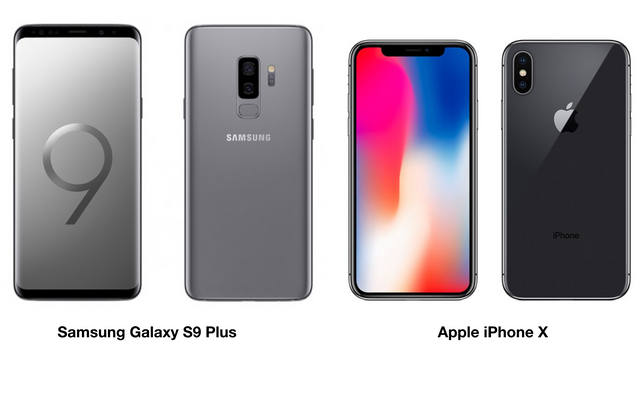
This is an independent study of two flagship smartphones based on third party testing. Samsung and Apple both have state of the art technology, but how do they compare against one another. I used 4 categories to evaluate, namely:
- Processor
- Display
- Camera
- Battery
I also used a 10 grade scale that is based on the data. In order to remain as unbiased as possible, all the results gathered were from third party findings. These are evaluations based on those findings.
PROCESSOR
The Samsung Galaxy S9 Plus is using the Qualcomm Snapdragon 845 in the US and China, while the global market is using the Exynos 9810. For this comparison the Snapdragon 845 is the processor being evaluated. The S9+ uses an Octa-core (4x2.8 GHz Kryo 385 Gold & 4x1.7 GHz Kryo 385 Silver) with an Adreno 630 GPU. The Apple iPhone X is built with the Apple A11 Bionic Hexa-core 2.39 GHz (2x Monsoon + 4x Mistral) with an integrated Apple GPU (three-core graphics). The S9+ uses Android 8.0 (Oreo) while the iPhone X is on iOS 11.3 (as of this update). The processor criteria uses the general performance results benchmark from Tom's Guide using Geekbench4.
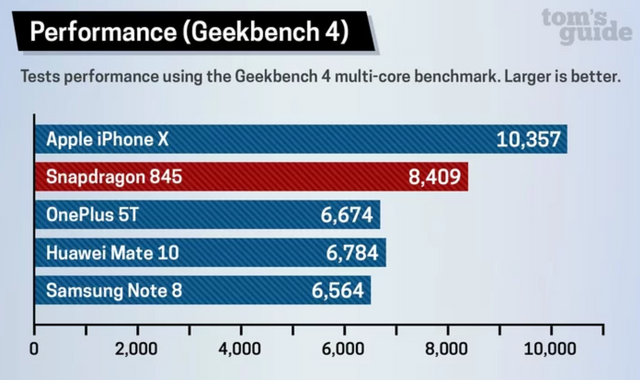
The A11 Bionic dominates in the performance category with a multi-core score of 10,357. The Snapdragon 845 did quite well too at 8,409. The A11 Bionic is a 6 core CPU, with two performance cores that bring a 25% boost in performance and 4 high-efficiency cores that promise up to a 70% improvement over the iPhone 7's A10 Fusion chip. Apple's iPhone X GPU also promises a 30% performance boost for graphics. Geekbench4 measurement is based on multi and single core performance, so while the scores were impressive, these are based on shorter max burst performance. That means when it comes to thermal and heat dissipation, the performance will not be sustainable compared to a laptop or desktop computer.
What the Snapdragon 845 lacks in CPU power, it made up for in graphics performance. Using data from Tom's Guide testing of 3DMark's Sling Shot benchmark, the Snapdragon 845 scored 5,964 running OpenGL ES 3.0 while the iPhone X scored 3,998. However on the Sling Shot Extreme OpenGL ES 3.1 benchmark there was a closer score, with the iPhone X 4,994 to the Snapdragon 845 4,389.
The A11 Bionic is a beast when it comes to performance. This can be utilized for most apps from productivity to gaming. Perhaps the potential is bigger for more compute intensive apps that use 3D, AR and VR as well as streaming high resolution video content. Performance does have a drawback and that is battery power usage. For this Apple gets a score of 10/10 to win the performance category.
DISPLAY
The iPhone X has a 5.8" Super Retina HD OLED screen with 1125 x 2436 pixels for a pixel density of approximately 458 ppi. The S9+ has a 6.2" Super AMOLED screen with 1440 x 2960 pixels for a pixel density of approximately 529 ppi. They both can display 16 million colors, HRD10 compliant and support the P3 color space. When it comes to brightness, the iPhone X produces 634 nits while the S9+ 1,130 nits (results vary, this was based on Displaymate testing). The recent Displaymate award for best display now goes to the S9, which we can base the S9+ on. Formerly the iPhone X boasted of having Displaymate's best display award.
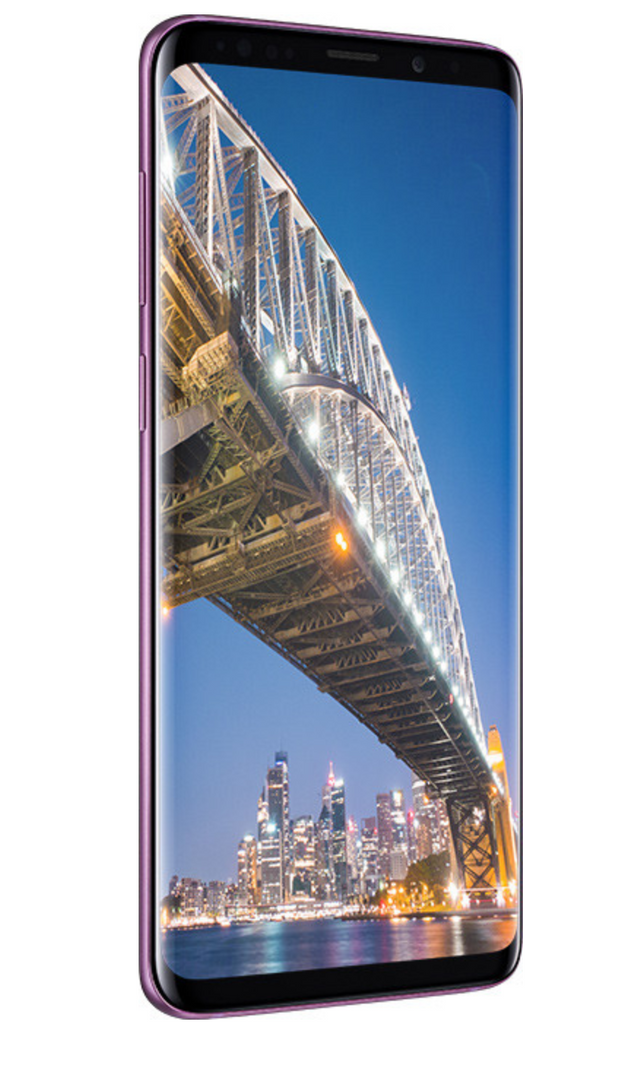
From a display perspective, the S9+ has a bigger screen with higher resolution. It also has sharper image quality based on the pixel density. On the brightness level, the S9+ comes out on top as well. The iPhone X's OLED display is also manufactured by Samsung, so it is just as brilliant as the S9+. Since the S9+ has an overall larger display, it has a slightly bigger screen-to-body ratio compared to the iPhone X. Some consumers were not too happy with the iPhone X notch which gets in the way of the display. The S9+ has less bezels and an infinity display screen which is great for viewing content and streaming video as well. This category goes to the S9+ based on pixel density using 800 ppi (Sony Xperia) as the 10 scale. The S9+ scores a 7/10.
CAMERA
There is plenty to talk about in this category, because it becomes more perspective when it comes to camera preference from a user rather than technical specifications and results. There are preferences based on brand, and what the users are comfortable with. Many will say the iPhone X has the best camera, but these are based on preference. However, DxOMark does imaging tests of cameras to validate quality. According to their testing, the S9+ has a better camera in terms of quality compared to the iPhone X. The S9+ scored a 99 while the iPhone X scored a 97. What DxOMark does is test the smartphone cameras based on image quality to create benchmarks like the scores provided.
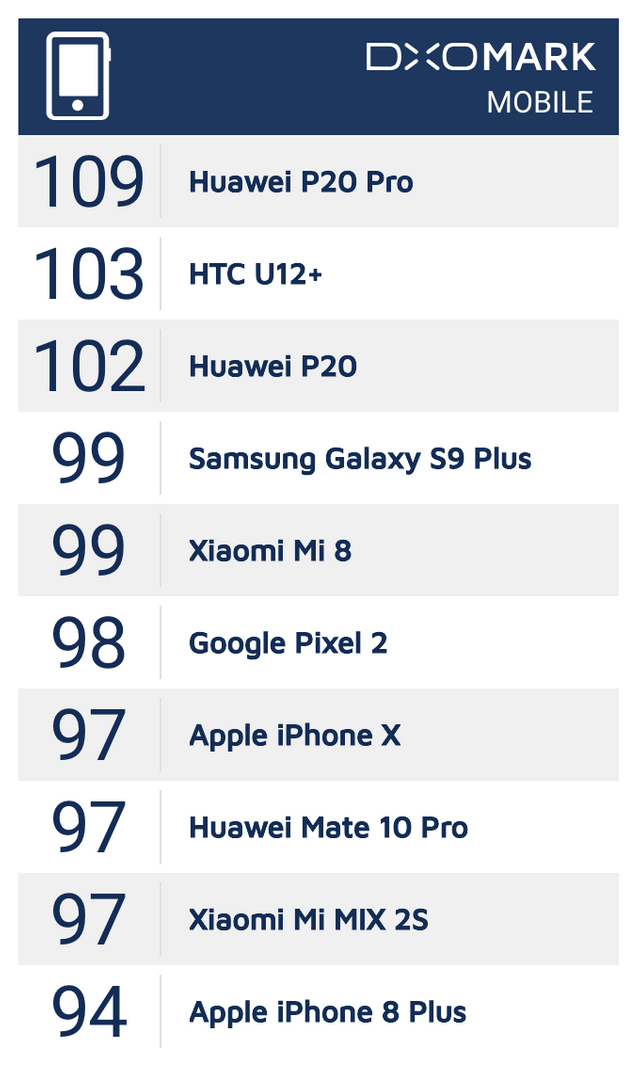
The S9+ has a dual camera system 12 MP (f/1.5-2.4, 26mm, 1/2.55", 1.4µm, Dual Pixel PDAF) + 12MP (f/2.4, 52mm, 1/3.6", 1µm, AF) with OIS, phase detection autofocus, 2x optical zoom and LED flash. The S9+ is also one of the first smartphone cameras to feature dual or variable aperture technology. This makes the S9+ capable of switching between f/1.5 and f/2.4 apertures which can be done automatically or through a manual mode. The front camera (selfie camera) has 8 MP and f/1.7. Video supports 4K 2160p@60fps, 1080p@240fps, 720p@960fps, HDR and dual-video rec. Samsung's camera is brilliant for low light photos shot in the early evening and using ambient street lights at night (check https://www.samsung.com/us/smartphones/galaxy-s9/camera/#dual-aperture). The S9 and S9+ also have a pro mode setting which allows users to determine the setting for aperture, ISO, shutter speed and focus when creating an image.
The iPhone X also has a dual camera system 12 MP (f/1.8, 28mm) + 12 MP (f/2.4, 52mm) with OIS, phase detection autofocus, 2x optical zoom and quad-LED dual-tone slow sync flash. The front camera is 7 MP at f/2.2. Video supports 4K 2160p@24/30/60fps, 1080p@30/60/120/240fps. Many have already demonstrated how good the iPhone X shoots slow motion video as well as using it for making short films (check out https://petapixel.com/2017/11/09/cinematic-short-film-shot-entirely-iphone-x/). Creatives are finding many ways to use the iPhone X camera, not just for social media but for filmmaking.
According to CNET: "You'll notice slight differences in color temperature and texture: The Galaxy S9 Plus tends to be a warmer, while the iPhone X has cooler hues." It will also depend on the lighting and settings of the camera (automatic or manual).

Overall they are both great smartphone cameras. If one wants to judge the camera by what it is capable of and utility, that is fine. However from the testing based on DxOMark, the S9+ camera stands out to deliver better quality and imaging. The highest scale based on 10 for DxOMark data (109 for Huawei P20 Pro) gives the S9+ an equivalent of 9.9/10. This gives Samsung the camera category.
BATTERY
Comparing batteries was based on testing done by AppleInsider based on 5 different tests. Samsung’s smartphone has a huge advantage here in battery capacity with a 3500mAh. The iPhone X has a 2716mAh capacity. Circuits now follow a more energy efficient design and to accommodate thinner body with smaller batteries. It doesn't neccessarily mean the capacity has to be smaller, as in the case of Apple. While the S9+ has great capacity to power its many features, the iPhone X falls short on that based on the testing as well. You really cannot sacrifice battery capacity in most cases, unless you have really energy efficient components. That was what Apple's idea was with the A11 Bionic, but it still consumes a lot of power. Many features are power drains because they require more use of compute resources.
Here is how AppleInsider tested taken from: https://appleinsider.com/articles/18/04/17/watch-iphone-x-vs-galaxy-s9-plus-battery-life-compared :
========================
Test 1: Overnight
The first test was relatively simple, measuring how much battery would be consumed overnight on both phones, if they were left alone with no apps running. They were charged to 100 percent, all background apps were closed, and the two smartphones were left in the office until the following morning. Approximately 16 hours later, the Galaxy S9 Plus said it was at 85 percent capacity, but oddly the iPhone X read it was at 99 percent charge. Some users anecdotally claim that iPhones have better standby battery life. While that may be true, 99 percent remaining after 16 hours seems unrealistic.
Test 2: YouTube
Last week, a battery life test on the iPhone X showed impressive savings when using YouTube's dark theme. Unfortunately, the same theme isn't yet available on Android, so for the S9 Plus, the same test was performed using the default YouTube theme. Both phones were set to approximately 80 percent brightness, and played a three-hour YouTube video. After three hours, the iPhone X was down to 55 percent charge remaining, while the S9 Plus reached 67 percent, meaning Samsung's device wins this test by a good margin.
Test 3: Gaming
A fairly graphics-intensive game named Vainglory 5v5 was played on both phones for exactly one hour. We were going to play Fortnite, but it is currently only available on iOS. For this test, the brightness was cranked up to 100 percent, with the aim of maximizing battery usage and hopefully showing a bigger difference in results.
After an hour of play, the iPhone X was at an impressive 87% battery life, and the Samsung was at 84%.
Since the S9 Plus has a larger battery to begin with, it would probably outlast the iPhone X if you played until both batteries drained. Either way, they both did a great job, considering brightness was maxed out.
Test 4: Partial discharge benchmark
Probably one of the most accurate ways to test the battery life, Geekbench 4's battery benchmark was used on both handsets. First, was the app's partial discharge test, which dims the screen, and runs processor intensive tasks for 3 hours straight.
The iPhone X was at 40 percent battery life at the end of three hours, giving it a score of 2,566.
The Galaxy S9 Plus finished with an extremely impressive remaining charge of 63 percent. This helped it score a massive 4,592, which is 79% higher than the X.
We noticed that the Samsung did really well in longer battery tests. Without being able to see the battery's actual condition, based on these tests it seems like the iPhone X inaccurately displays the battery percentage while closer to a full charge, and quickly drops to catch up with its actual battery life when nearing empty.
Test 5: Full discharge benchmark
For our final test, we ran Geekbench 4's battery benchmark again, except now we ran the full discharge test. This is similar to the partial discharge, except it runs until completion, as the name suggests. The iPhone X was completely drained after 4 hours and 45 minutes, scoring 2,845 points. This score ended up being slightly better than on the partial drain test. The S9 Plus, on the other hand, lasted 7 hours and 22 minutes before completely draining. Again, Samsung's result towered above the iPhone X, with the S9 Plus achieving 4,420 points.
========================
Based on this test, we have 5 types at 2 points each for a total of 10 points. The S9+ scored 4 out of 5 taking 8 points out of 10. The iPhone X only won the overnight test in this category to take 2 points. It really depend how someone uses their smartphone in the real world, but overall the battery life of the S9+ is the better between the two.
THE VERDICT
This is where it is hard to really say one phone is better than the other because the results were very close. They are both excellent, but when it comes to measuring the performance and capabilities of these phones based on 4 categories, the Samsung Galaxy S9 Plus appears better on 3 out of 4 while the Apple iPhone X dominates in the processor category. This is not to say which one is best for any user, it will still depend on things like style, preference and choice.
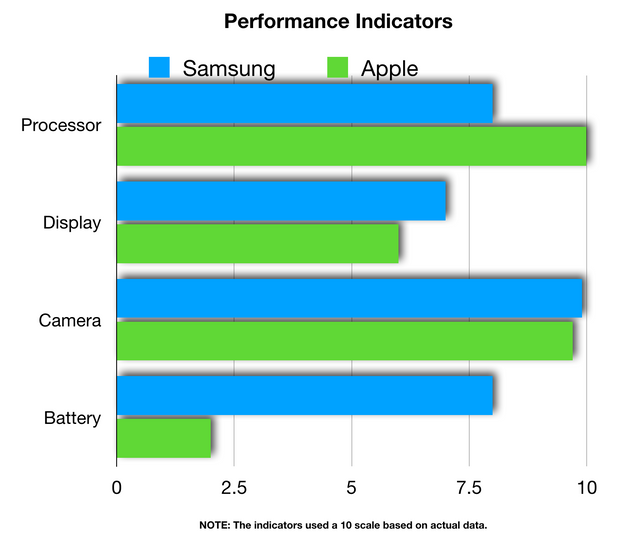
References:
S9+ and iPhone X Camera Comparison
https://www.cnet.com/news/iphone-x-vs-galaxy-s9-plus-camera-comparison/
DxOMark Camera Ratings
https://www.dxomark.com/
Tom's Guide Benchmark of Snapdragon 845 vs. A11 Bionic
https://www.tomsguide.com/us/snapdragon-845-benchmarks,news-26598.html
S9+ and iPhoneX Battery Comparison
https://appleinsider.com/articles/18/04/17/watch-iphone-x-vs-galaxy-s9-plus-battery-life-compared
Samsung Best Display Award for S9
https://gadgets.ndtv.com/mobiles/news/samsung-galaxy-s9-plus-displaymate-analysis-best-smartphone-display-1818571
You have a minor misspelling in the following sentence:
It should be accommodate instead of accomodate.Get your post resteemed to 72,000 followers. Go here https://steemit.com/@a-a-a